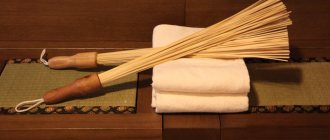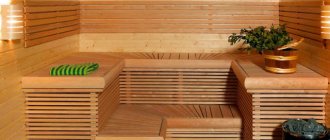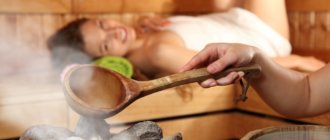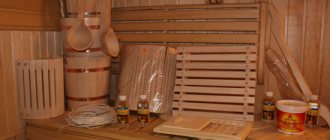What are the benefits of garlic for the human body?
Garlic is rich in vitamins, antioxidants and phytoncides.
The spicy plant is known for its medicinal properties:
- helps in the fight against viral and bacterial infections;
- strengthens the immune system;
- stimulates metabolism;
- strengthens blood vessels and reduces cholesterol levels.
Eating garlic is an effective prevention of cancer and vitamin C deficiency.
How to properly prepare a decoction
It is best to use enamel cookware. Stainless steel cookware will also work. The decoction should be prepared at the rate of one tablespoon per glass of water. First add the dry mixture, then add boiling water and place on high heat. Don't forget to cover the pan with a lid. When the water boils, reduce the heat to low and simmer for about 45-60 minutes. Then cover the pan with a kitchen towel and simmer until completely cooled. The cooled liquid must be filtered through a sieve or gauze and poured into glass bottles. Should be stored in a dark and cool place.
How to make a garlic bath: step-by-step instructions
Garlic infusion for the steam room is prepared several hours before use:
- The garlic bulb is peeled and grated. It is allowed to chop finely, then you don’t have to clean the cloves, the husk will also release useful substances along with the steam.
- Chopped garlic is poured with boiled water, cooled to 85˚C and left for several hours (you can leave it in a thermos overnight).
- The tincture is filtered.
- Before use, prepare a solution of 6–8 liters from the tincture.
- To ensure that the steam room has a garlic aroma without any burning smell, the stones are first poured with boiling water, then immediately with garlic tincture and again with boiling water.
- Breathe medicinal steam.
The garlic solution can be made more concentrated. In this case, it is not poured onto the stones, but sprayed with a spray bottle or a broom on the walls and ceiling.
When used in a bath, the medicinal components of garlic penetrate into the blood through the mucous membranes, and their effect begins immediately after using the tincture.
Aromatic plants and bath brooms
Aromatic plants and bath brooms can create a favorable atmosphere and aromas for a bath.
Plants
To create aromatic and pleasant steam during the construction of baths, special tree species with a high content of aromatic substances are used. Thus, pine needles are used for the frame, linden and aspen are used for interior decoration, and cedar or oak are used for decorative elements.
To create a cozy and healthy microclimate in the finished room, fresh or dried herbs and plants can be used, scattered on the floor, laid out on floor beams or hung on the walls. The best choice for a bath is herbs harvested with your own hands in ecologically clean regions.
For example, birch and pine branches, linden leaves and wormwood for a bath can saturate the steam with a soft and unique aroma, improve well-being and lift your mood.
Walls and ceiling surfaces can be sprinkled with pine tincture for disinfection and relaxation. Plants placed on the floor help heal microcracks in the heels, improve blood circulation and relieve fatigue in the legs.
Beneficial features
Horseradish contains many useful components, and is also accessible to everyone.
You no longer need to go to the pharmacy for essential oils; you just need to go to the garden or to the market to buy some horseradish. Firstly, the plant is a powerful antiseptic and is simply irreplaceable during colds and flu. Secondly, horseradish contains a lot of vitamins and minerals, which when heated become active and easily penetrate the body. Thus, using horseradish products in a bath will eliminate a runny nose, prevent the onset of influenza and cure seasonal hypovitaminosis.
The pleasant smell in the bathhouse lifts your mood, improves your overall well-being, and relaxes you. The vitamin C contained in the plant triggers the body's antioxidant systems, promoting the elimination of toxins. The steam room, in turn, activates the excretory system, improving the removal of those same toxins.
A horseradish bath will be very useful for people with skin diseases, such as psoriasis. Any inflammation on the skin causes a breakdown of the barrier and provokes the growth of pathogens. Horseradish, as a powerful antiseptic, gets onto the skin along with the steam, disinfecting it. This will be a fairly mild effect because the same bath with horseradish may be contraindicated for patients with psoriasis.
Important: If you have any active skin disease, be sure to consult a specialist before visiting the steam room.
Natural essential oils
Aromatherapy in baths and saunas has a beneficial effect on all systems of the human body. Soft and clean steam containing aromatic oils helps prevent and treat various respiratory diseases.
Natural aromatic oils effectively saturate the bath air with beneficial compounds that actively penetrate the human body through the respiratory system and skin.
Essential oils in baths and saunas have the following beneficial characteristics:
They have metabolic, trophic, secretory, training and diaphoretic effects. Used for inhalation, massage, rubbing and baths.
Oils for saunas and baths, depending on their composition, can have a comprehensive healing effect on the body.
- Juniper, anise and dill oils are used for coughs and congestion in the upper respiratory tract.
- Eucalyptus and peppermint oils have a powerful antiseptic effect, so they are used for colds.
- To treat headaches and normalize blood pressure, it is better to use verbena and geranium oil.
- For muscle and emotional stress, you can use geranium, wormwood and lemongrass oil.
- If you lack strength and are tired, it is better to choose rosemary and rose oil.
- To treat skin diseases, it is recommended to use sedative and wound-healing essential oils for baths and saunas - chamomile, sage, valerian, sea buckthorn and pine. In addition, such oils tone and increase skin elasticity.
- Coniferous oil for saunas and baths - spruce, pine, fir and cedar - has a powerful antibacterial and anti-inflammatory effect. Such oils are best used as quick septic tanks for healing damaged skin.
- Air saturated with aromatic oils promotes detoxification and cleansing of the body. The best natural flavors for a bath are lemon, sandalwood and juniper oils.
How to prepare a plant?
It is best to use fresh leaves for a bath. Prepare them 2-3 hours before the steam room. Just wash the plant under running water and dry on napkins.
In winter, when steam rooms are visited at the highest level, it is difficult to find fresh horseradish leaves. No problem, the root will also work. You can prepare it in the summer. Take horseradish root, wash thoroughly and peel off the top layer. For the bath, the root should be thinly sliced, preferably into strips. Dry the plant, wrap it in newspaper and put it in a dark place. Dried roots do not spoil, so they can be used 1-2 years after stocks were made.
Recommendation: Dried roots can be stored, but the prepared decoction should not be used, because the smell disappears and the beneficial substances disintegrate.
Useful recipes for the steam room
Most often, horseradish is used as a means to flavor water in the steam room. Fresh leaves should be poured with hot water and left for about 30 minutes. Afterwards, the product must be strained through cheesecloth so that parts of the plant do not get into the infusion. The resulting water should be periodically poured onto the hot stones so that the aroma of horseradish constantly lingers in the steam room.
You can prepare an infusion from dried roots. Just keep them in hot water for at least 60 minutes, and preferably 2-3 hours. If your eyes become very watery while in the steam room, it means the infusion is overly concentrated. Just dilute it with warm water and continue using.
Tip: You can dilute the aroma a little by alternating horseradish decoction with bread kvass.
There is one common and ancient recipe that allows you to get a good medicinal decoction that will not irritate your eyes. For 4 liters of water, take 2 roots and 1 leaf of horseradish, boil and cook for about half an hour. Then the broth should be cooled, add 2 tablespoons of fireweed and 1 teaspoon of honey.
Despite the fact that horseradish is quite aggressive, the last recipe is useful even for children (if there are no general contraindications to visiting the steam room). The smell is soft and pleasant, does not hurt the eyes and does not cause irritation.
Also, flavored water for the steam room can be prepared based on several plants. Take horseradish, mint, thyme and eucalyptus. Pour boiling water over and steam for about half an hour. Strain the resulting broth and use for a bath.
Tip: Prepare the product in advance and pour a little onto the stones 20-30 minutes before visiting the steam room. This way you will immediately feel the aroma of herbs and disinfect the air in the bathhouse.
Source: priroda-znaet.ru
Herbal infusions and teas
No less popular is the herbal bath - the use of aromatic herbs for the preparation of medicinal infusions and steaming.
Bath infusions have a pleasant aroma, which is enough to quickly saturate the air in the steam room. During the process of herbal inhalation, beneficial compounds penetrate through the upper respiratory tract and are carried along with the blood to all systems of the body.
What plants can be used to prepare medicinal infusions and teas? Since bath herbs have the same powerful effect on the body as medications, they are therefore widely used for preventive and therapeutic purposes during bath procedures.
In order for bath infusions to be beneficial and provide a high therapeutic effect, you need to know in what cases each type of plant can be used.
- Antiseptic and anti-inflammatory effects - chamomile, eucalyptus, calendula, oak bark, sage, linden.
- Sedative and calming effect - mint, lemon balm, chamomile, linden, lemongrass.
- Normalization of blood pressure - hawthorn and motherwort.
- Tonic effect - wormwood, juniper and rose.
- Relieving nervous tension and fatigue - pine, fir, juniper, eucalyptus, thyme.
- Anti-cold and expectorant - eucalyptus, lavender, linden, thyme, sweet clover.
- Accelerate metabolism, strengthen the immune system, detoxify the body - lavender, chamomile, mint.
To get the maximum effect from bath procedures, it is recommended to use fresh herbal infusions and bath steams. Steaming for a bath based on medicinal plants is sold ready-made at the pharmacy - small canvas bags containing the required set of herbs. If desired, you can make this decoction yourself.
To prepare a decoction for a bath with your own hands, you should first buy medicinal herbs at your discretion. We brew the decoction according to the recipe strictly in compliance with the proportions proposed by the manufacturer.
We suggest you read: Is it possible to combine a warm water floor and a wooden floor?
When performing bath procedures, it is not recommended to use alcohol tinctures to avoid drying out the mucous membrane.
Garlic in the bath
Garlic in a bath, despite its “harshness,” is very appropriate. If we are talking about a bath for health. Of course, it is better to use garlic in a bath only in a family bath, since in a public bath your action will be misinterpreted.
what is the purpose of cheskok Firstly, to maintain good health. Garlic has always been considered a universal remedy that cures everything from colds to plague. It is an excellent source of manganese, vitamin B6, vitamin C and selenium. Garlic has properties that help our heart and liver: 1. good for blood and circulation 2. helps stimulate the immune system 3. helps reduce “bad” cholesterol 4. increases metabolism 5. helps better absorb iron 6. serves as a cancer prevention (includes in the top 10 best anti-cancer products) 7. fights bacteria and viruses 8. helps remove warts 9. treats toothache. Secondly, as a remedy: 1. For colds. Chop a clove of garlic and add a little hot water. Let sit for 5 minutes. Strain and drink the decoction. This is a natural cough syrup. During cold and flu season, eat 3 raw garlic cloves daily to prevent illness. 2. For acne. Cut a clove of garlic in half and rub over the affected areas of the skin. Carry out the procedure regularly and your skin will become clear. 3. About herpes. Cut a clove of garlic in half and rub on the sore area. This may cause discomfort, but it is as effective as expensive pharmaceutical products. 4. Treatment for foot fungus. Throw a couple of crushed garlic cloves into hot water. Let it brew for a bit. Pour the resulting liquid into a foot bath and soak your feet for half an hour. Thirdly, as a drug for controlling insects indoors and even garden pests: 1. Using a garlic-based soap spray gives good results in the fight against gypsy moths, which infect apple trees. It's quick and easy to make, it's economical, non-toxic to the environment and our bodies - and it works! Soap has been used for centuries as a universal pesticide. It destroys insect cell membranes and kills pests. The trick is not to use too much of it, otherwise it will kill the plant along with the pests. Grate the laundry soap and add water to obtain concentrated liquid soap. To prepare the solution, take 1-2 tablespoons of liquid soap per 1 liter of water. Chop 1-2 cloves of garlic and add boiling water. Cover and let sit overnight. Strain in the morning. Pour soap and garlic solutions into a spray bottle. In dry weather, treat the plants. The solution deteriorates quickly, so you need to prepare it as needed. 2. Repellent against mosquitoes and other insects. Everyone knows that the best remedy for vampires is garlic. That's why mosquitoes are afraid of garlic. You can rub garlic on your skin to repel mosquitoes, but if that's not your thing, you can place peeled garlic cloves where the mosquitoes have appeared. Fourthly, as a household product. 1. glass installation. If small cracks appear on the glass, you can squeeze garlic juice onto it. After some time, you need to wipe off the excess wax. Garlic is a natural glue. It will help glue the fragments together and prevent further damage. 2. Glue. Garlic can be used to glue other materials, such as paper. 3. Fighting ice. Garlic salt works wonders for removing ice from roads, sidewalks, and other surfaces. 4. Homemade surface cleaner. Chop 3-4 cloves of garlic. Place them in a spray bottle filled with white vinegar. Add a couple of drops of lemon oil and the sanitizer is ready!
Consulting: Bely Alexey Bathhouse, international-class technologist of the Kuban Bath Association.
Source: votalif.votalif.ru
Steam with oregano
Oregano, or marjoram, is recommended for use in the complex treatment of diseases of the stomach and intestines. Due to its strong antimicrobial properties, the plant is used not only internally, but also to prepare aromatic steam. You will need:
- a large handful of marjoram or 2-3 drops of oil;
- liter of hot water.
Pour boiling water over the ground dry mixture or drops of oil and leave for 30 minutes. If dry grass was used, filter it. Before use, dilute with warm water in a ratio of 1:5.
What are the benefits of a Russian bath?
According to doctors, the Russian bath relieves fatigue and actively affects the function of internal organs, the cardiovascular system and metabolism in general. In the steam room, a person begins to actively sweat, an abundant release of moisture from the body occurs, which leads to its cleansing and renewal. Bath procedures help you lose excess weight and help get rid of cellulite.
From time immemorial, our ancestors treated various ailments and illnesses with the help of hot steam and a broom. It was in a heated bathhouse that it was customary to give birth, at least among peasants. Thus, the mother and baby were protected from infections, since viruses and bacteria died from high temperatures. In addition, in a warm and relaxed environment, the birth process was easier.
By the way, doctors claim that visiting a Russian steam room is beneficial for women with gynecological problems. The Russian bath alleviates the symptoms of menopause, treats complications after abortions and miscarriages, menstrual irregularities and even infertility. And it is also very beneficial for the skin. It is useful to go to the bathhouse for those who suffer from hives and various dermatitis.
Research concerning the influence of the Russian bath on the human body was also carried out by foreign scientists. Thus, Japanese researchers have found that moderate bath procedures in patients suffering from high cholesterol, hypertension, and diabetes lead to strengthening of blood vessels, lowering blood pressure and blood sugar. German experts found that children who do not visit a bathhouse or sauna get sick twice as often as their peers. In addition, the contact of water with hot stones leads to the formation of negatively charged ions, which have a beneficial effect on the body.
Bath at the initial stage of sinusitis
Sinusitis is a very unpleasant disease when, as a result of the inflammatory process, pus accumulates in the maxillary sinuses, which is the result of the struggle of leukocytes with harmful microorganisms.
The resulting pus has an extremely unpleasant putrid odor, and inflammation of the nasal mucosa leads to swelling of the airways, leading to nasal congestion. Inflammation can be acute or chronic, but in the first stages it is easy to recognize by pressing heaviness in the maxillary sinuses, weakness, nasal congestion and copious mucous discharge.
Some people mistakenly believe that during this period it is necessary to take a steam bath in order for the disease to go away. But a steam bath is unlikely to help here. The proliferation of harmful microorganisms can only be stopped by taking medications prescribed by a doctor, including antibiotics.
In some cases, if the outflow of purulent discharge is difficult, a puncture is prescribed and the maxillary sinuses are washed with a sanitizing solution.
At this time, it is better to refrain from visiting the bathhouse and quickly consult a doctor to receive timely treatment.
Sinusitis can be acute or chronic. In the acute form, everything is quite clear - all the symptoms, as they say, are obvious: snot, tears, pressing heaviness in the sinuses, purulent discharge, weakness, fever.
With chronic sinusitis, the course of the disease is less acute, but this does not mean that treatment should be treated less carefully.
It is the chronic course of sinusitis that is often misleading, giving hope for a quick recovery. It seems that it’s worth going to the bathhouse and warming up properly in order to heal and forget about the runny nose. But in the case of sinusitis, this can cause serious harm.
It is in a warm environment that harmful microorganisms begin to actively develop, and the lack of timely treatment only aggravates the situation.
The fact that pus does not flow from the nose may not mean that there is no sinusitis. This may be an alarming signal that there are no ways for the natural outflow of pus from the sinuses and that you need to resort to flushing them through surgery.
Therefore, if you suspect sinusitis, you need to go not to the bathhouse, but to the nearest clinic, where it is possible to take a picture of the maxillary sinuses and receive timely treatment.
Many bathhouse owners believe that strong hot steam can cope with any illness and, in case of any illness, they advise going to the steam room to warm up properly. But is this really so and is it possible to visit the bathhouse with purulent inflammation of the maxillary sinuses? Let's try to figure it out , at what stage of the disease you can go to the bathhouse, and when you should not do this.
Here's what the experts say.
: Bath for the initial stage of sinusitis Bath for the development of the disease Bath after recovery Recipes for inhalations and infusions for sinusitis Using garlic for treatment in the bath
How often can you steam?
However, most experts agree that the steam room should be visited no more than 1-2 times a week. “By and large, a bathhouse is a big burden on the body,” says allergist Elvira Gilvanova. — The bath requires slowness and thoroughness. Those. You can rinse yourself at least every day, but you need to steam once a week.”
Since the temperature in the steam room exceeds 60 degrees, this can negatively affect the condition of the skin, hair, and, of course, the cardiovascular, respiratory and reproductive systems. In addition, almost all of us have some kind of pain.
“It’s better to steam at a temperature of 60-80` C, with a humidity of 20-40%,” recommends Elvira Gilvanova. —
But you can just wash yourself at 50°C, without steam.”
First of all, experts say, frequent steaming is contraindicated for those who do not tolerate hot and humid steam well: it is very hot in the steam room! Those who suffer from exacerbations of chronic diseases should not actively visit the bathhouse; oncology; elevated temperature; cardiovascular diseases; epilepsy; Parkinson's disease.
As for women, those suffering from acute inflammatory diseases of the genital area, those who have recently undergone childbirth or surgery, as well as pregnant women at risk of miscarriage should not go to the bathhouse.
Natural flavors and additives
With the right approach, you can get therapeutic steam with any aroma in the steam room by adding natural flavors and additives to the water.
The classic aroma of a bathhouse is the bready aroma exuded by kvass or beer. Such drinks are infused with bread crumb and malt. Another natural flavoring for saunas and baths is honey, which will fill the room with the amazing smell of a field apiary.
Lovers of forest walks can choose spruce or fir flavors - the steam acquires a rich aroma of pine needles. Mint and lemon balm aromas help relieve physical fatigue and stress. Exciting aromas of rose, sandalwood, ylang-ylang, orange and lemon can give vigor and confidence, lift your spirits and improve your well-being.
A good alternative to drug treatment for colds is to use mustard powder to produce medicinal steam. Some bath attendants will like the smells of melons - melon or watermelon, while others will not refuse the aroma of ripe cherries or peach.
A garlic bath is completely unusual for lovers of spicy aromas and piquancy. Garlic steam has a powerful antiseptic effect on the upper respiratory tract, so it is especially useful for colds.
Creating a fragrant atmosphere in a bathhouse is a serious and responsible process. To ensure soft steam and benefit from wellness treatments, it is important to know how to use natural oils, herbal infusions and flavors, purchased at the pharmacy or made by yourself.
Since ancient times, bath aromas have been used to create a special fragrant smell. In Rus', infusions of bathhouse aromas were also used for medicinal purposes. Many recipes for preparing these healing potions have come down to us. Thus, decoctions obtained by steaming a birch broom not only create a pleasant aroma in the steam room, but also have a healing effect on the central nervous system , which stimulates the activity of all human organs and, as a result, promotes recovery from many ailments.
Bath "rules"
Professor, Doctor of Medical Sciences Anatoly Biryukov, states: “Regularly visiting the bathhouse, for example, once a week (preferably on Saturdays or Sundays), makes it possible to provide proper hygienic care for the body, as well as get rid of the fatigue that has accumulated over the week... Visiting the steam room - one of the methods of hardening and prevention of certain infectious, colds and rheumatic diseases. Therefore, you can visit the bathhouse several times a day, but subject to certain rules.”
For example, the specialist advises, “when entering the steam room for the first time, beginners, the elderly, children and those who feel not entirely healthy should be placed in the “comfort” zone - on the bottom shelf, where the air temperature is not so high. The duration of stay should not exceed 6 minutes. After entering the steam room for the first time, you should rest for 8-12 minutes in a well-ventilated area.”
Also, Biryukov advises, it is better to be in a lying position in the steam room, as this reduces the load on the cardiovascular system and promotes nervous and muscle relaxation. You should not stand or sit with your legs down - this again puts a strain on the heart and also overheats the head. If there is not enough free space, then when sitting, it is better to stretch your arms along the shelf or pull them to your chest.
So, in principle, you can go to the bathhouse every day, but you should take a steam bath only on special “bath” days and in compliance with all the rules prescribed by doctors. Of course, if you want visits to the bathhouse to bring benefits to your health and not harm.
Source: tchesnok.ru
Bath after recovery
As you already understand, if you have sinusitis, it is better to refrain from visiting the bathhouse. But after the disease has passed, you can safely go to the bathhouse.
It should be remembered that after an illness the body is weakened and you should not stay in the steam room for a long time. Also, you do not need to climb onto the top shelf, so as not to expose your body to too much temperature change.
But warming up by inhaling hot air will be very useful for quickly recuperating after an illness.
It is especially useful to use herbal decoctions and infusions for inhalation.











